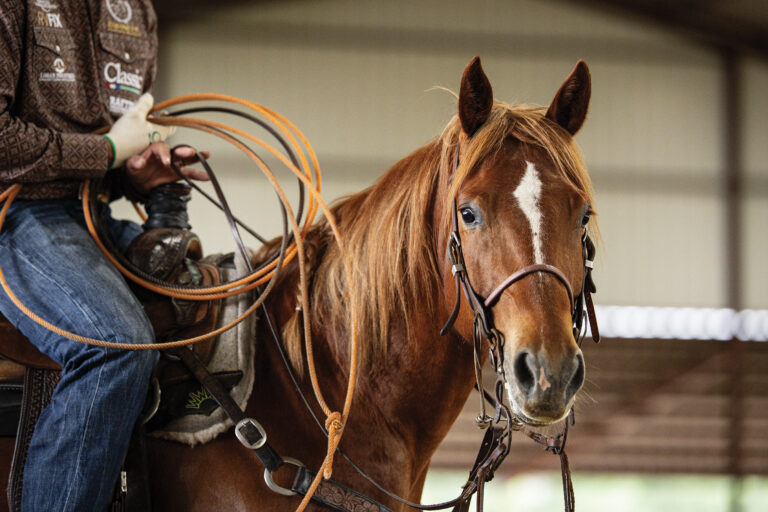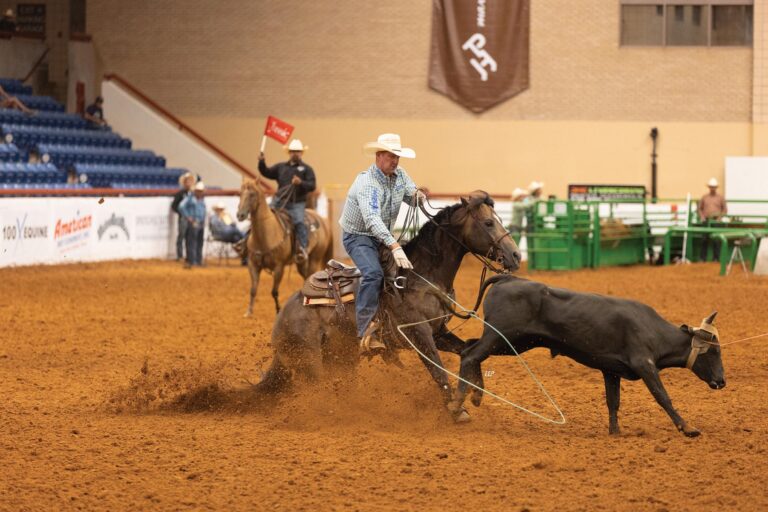Original Print Publication: August 2019
The American Quarter Horse industry cruised in the early years aboard the stout shoulders of a few hardy bloodlines: Hancock, Two Eyed Jack, Driftwood, Sun Frost and Peppy San Badger. Their descendants still make premier head and heel horses. Plus, you can rope both ends on most of them, do multiple events and ranch.
But a few of those lines have been plagued by rumors over the years. Do they buck? Are they stubborn? Are they rough-riding? In the past, the Team Roping Journal has examined running-bred head horses and cutting-bred heel horses. Now, here’s the 4-1-1 on a handful of the more versatile equine athletes—and whether any old stereotypes are warranted.
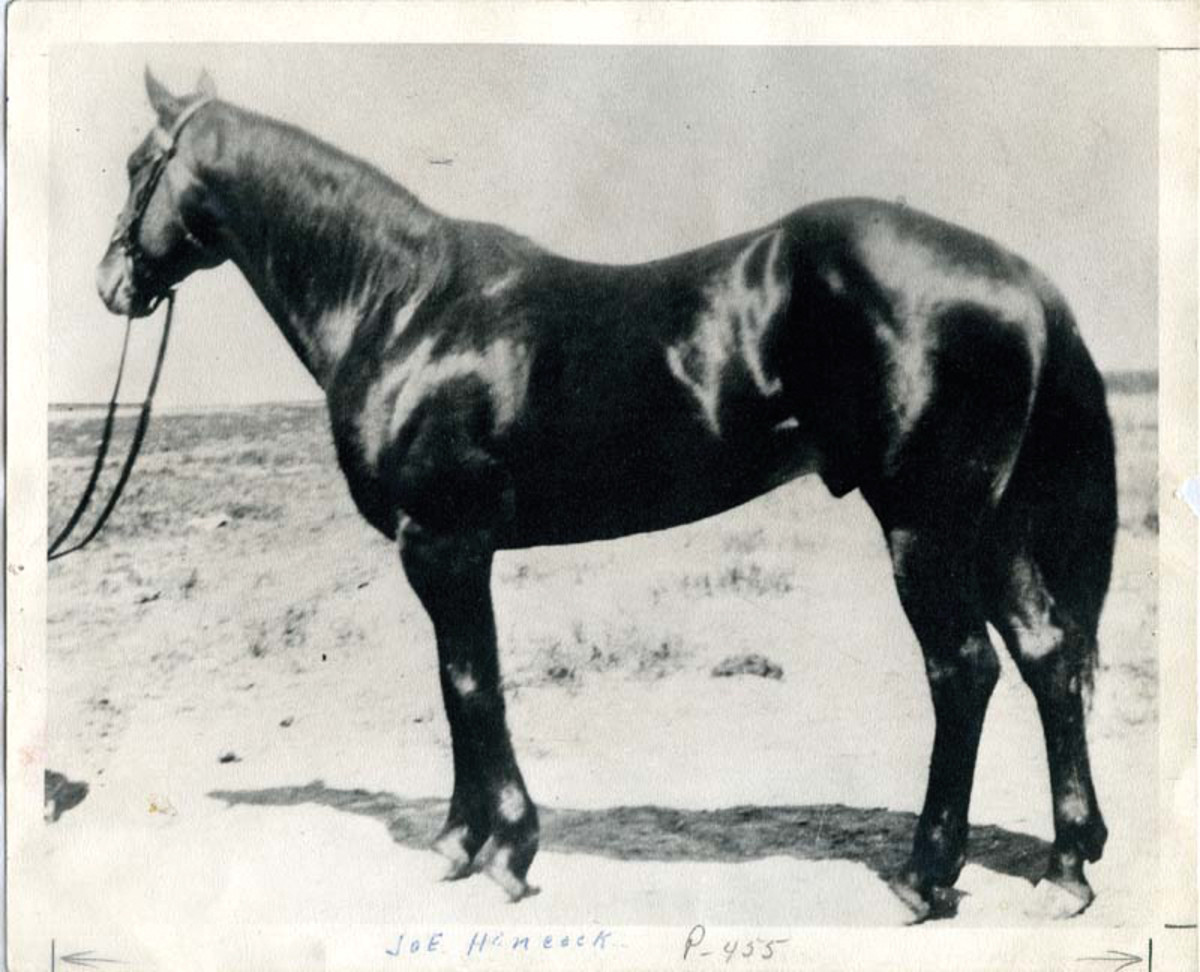
Hancock’s Roan Renegades?
Few bloodlines inspire as much admiration or as many snorts of derision as the line of horses descended from Joe Hancock. There seem to be two camps: Hancocks are either the best, soundest working horses in the world, or are a bunch of big, coarse broncs.
The truth? Joe Hancock’s get were stout but had quick speed. His half-Percheron dam provided the line’s reputation for toughness and soundness. But Idaho’s Shannon Pearce, who’s been riding and raising Hancock-bred horses for 50 years, said there’s more to the story.
“Walt Lamar always swore that mare only weighed 1,100 pounds because she was a ‘coach Percheron,’” he recounted. “Those were smaller than draft horses and bred to haul stagecoaches great distances in a hurry, so they were fast-footed.”
It’s that quickness that made Joe Hancock one of the greatest quarter-mile racers in history. He was only beat one time at the half-mile. His advantage was how hard he could break from the starting line, thanks to those powerful hips and loins.
The first owners found Joe Hancock to be so nice-natured they never got around to gelding him. Then, as a senior stallion for the 6666 Ranch, he bred Burnett mares that not much is known about, since the AQHA hadn’t formed.
“A lot of people think they’re bronc-y, but Joe Hancock himself definitely wasn’t,” Pearce said. “It just depended on the mare. Roan Hancock and Red Man were brothers out of roan mares. Red Man colts hardly ever bucked, and Roan Hancocks could buck you off.”
Here’s the deal. That was the 1940s, when ropers weren’t just arena cowboys. Whether or not the buck came from Roan Hancock is a matter of opinion, but the performers definitely came from him and Red Man.
In 1947, at his first big steer roping, Hyde Merritt noted three of the top four guys riding horses by Roan Hancock, with the fourth aboard a Joe Hancock. In fact, legends Shoat Webster and Everett Shaw won gold buckles on half-brothers Popcorn and Peanuts by Roan Hancock, known to pass on powerful builds and level heads. Still today, the Haythorn Ranch is putting out some great head and heel prospects thanks to a mare by a Roan Hancock grandson.
Just as only one Hancock branch likely produced any bucking, only one branch unfortunately produced high-hocked, rough-riding, ugly-headed roans. This is the picture people get in their mind of “Hancocks,” despite plenty of performing blood out there.
The latter is evident when you consider steer-roping world champs Scott Snedecor and Buster Record won plenty of money on a fast little double-bred Hancock gelding. Or, that one of the winningest team roping horses of all time was double-bred Hancock.
When Gill Cattle Company bred the Joe Hancock Jr. son, Pelican, to a Depth Charge granddaughter, then crossed that stallion on a Roan Hancock mare, they got the Wheatley family’s great NFR heading stallion Frosty Tops. Pearce reckons that NFR team ropers have won upwards of $8 million on him and his get over the years.
Well before that, Shoat Webster had convinced old-time Oklahoma roper Fred Lowry to buy Roan Hancock. The resulting Lowry Hancock blood has benefitted calf ropers, steer ropers and team ropers ever since. A grandson named Lowry Star stood in Wyoming for 20 years, and the Bower family still stands Lowry Star Jr.
“You’ve always got somebody that thinks they’re broncs,” said Bower. “But Lowry Star Jr. is the farthest thing from a bronc you’ve ever seen. He’ll go to bed with you at your house.”
The Wheatleys’ late stallion, Trapper Bar Drop, a Lowry Star grandson, sired the gelding that Keven Daniel won the Reno Rodeo on in 2013 and the mare that Erich Rogers placed at Cheyenne on in 2013. A Lowry Star daughter is still winning for NFR heeler Nick Sarchett’s 10-year-old son in five events after Nick placed on her at Tucson and rode her at the BFI.
“What makes them great rope horses is their durability and their smarts,” said Bower’s son, Brandon. “They retain what you teach them. and they’re real forgiving. They speak English.”
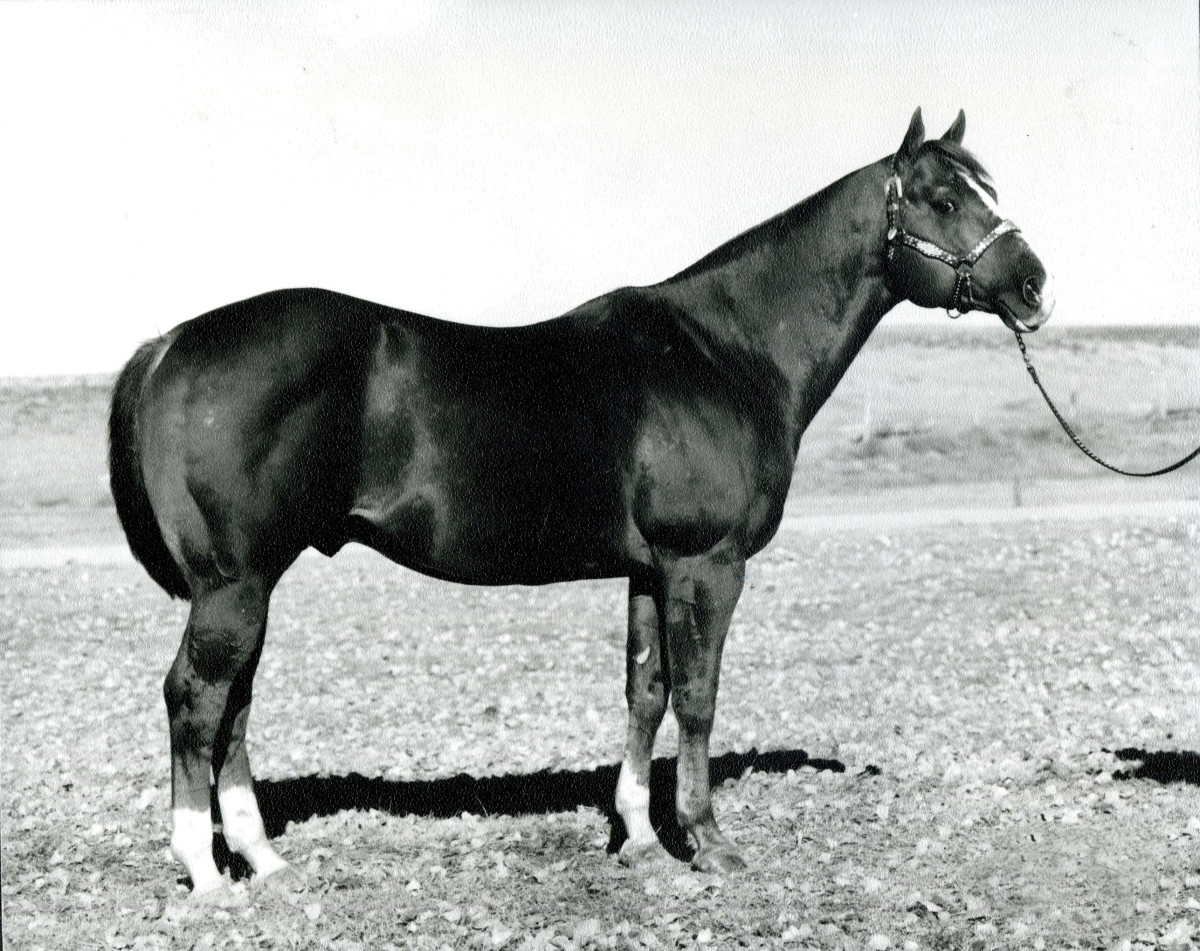
Jack of all Trades
Incidentally, a Roan Hancock daughter was bred to the appendix stallion Grey Badger III to produce the dam of Two Eyed Jack.
Some say horses of the mellow, laid-back “Jack” line can be hard-headed, maybe even opinionated. Team roper Jim Brinkman of Nebraska’s Pitzer Ranch says they’re brave.
“They don’t spook much,” he said. “You know, if you want to jump the river, they’re okay to try.”
He figures the stereotype of stubbornness may have started when some horses and riders didn’t share the same goal. A smart horse that’s unclear what its rider wants may simply figure out a better way to do it.
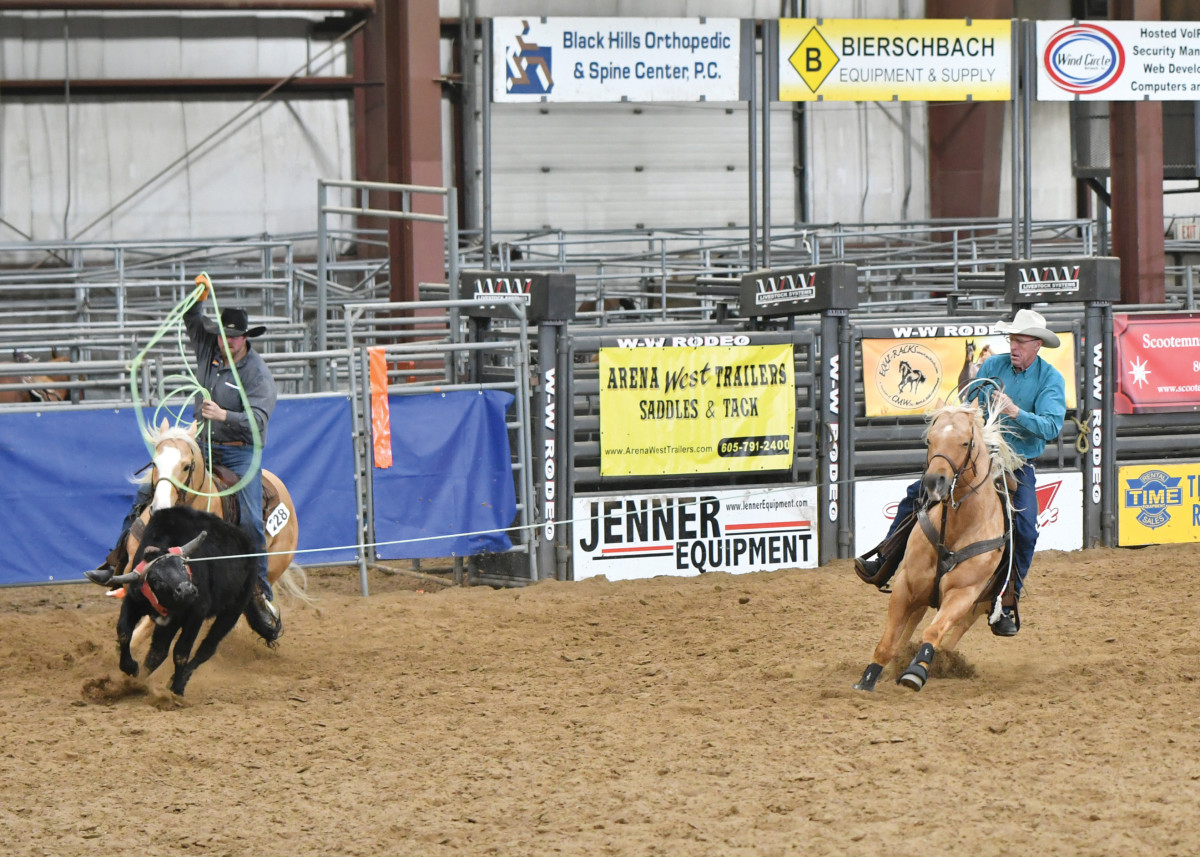
As a show horse, Two Eyed Jack won the most points of any rope horse in the nation. ProRodeo Hall of Fame steer roper Guy Allen won 18 world titles mostly aboard Jack Bart Tender and Two D Ole Man, each named AQHA/PRCA Horses of the Year. “Bullet” was by a Two Eyed Jack grandson and “Jeremiah” was an own grandson of Two Eyed Jack.
They’re apt enough to think on their own that some endearing “Jacks” tend, when bored, to occupy themselves with untying gates or rubbing off halters, albeit politely. Collectively, Brinkman says they’re gentle and have a high pain tolerance. If one gets tired but you want to back in the box and run another steer, the horse is all right with that. They’re low-maintenance.
NFR average champion Luke Brown’s “Fast Time” is out of a great-grandson of Two Eyed Jack. On Ima Two Eyed Con (“Cody”), Chad Masters won the world in 2007, made several NFRs, won three USTRC Opens and the Wildfire in 2013. Masters called Cody the best he’s ever ridden, and he bought several brothers, including one he rode at another NFR.
“Chad’s old bay horse, even recently, I watched him run 15 on him one afternoon,” Brinkman said. “That horse is just a warrior. And over the course of 60 years, that’s been pretty consistent. Once you get these horses into the pattern, they’re going to do it all their life. If they’re a little sore or things get tough, they don’t worry about it; they just go on.”

Dying for Driftwoods
The union of a Quarter Horse-Thoroughbred Joe Hancock granddaughter with Driftwood (“Speedy”) changed rodeo forever. He’d gotten the nickname as a match-racing winner before he became three-time world champion team roper Asbury Schell’s rope horse.
Both Speedy and his most famous son, Driftwood Ike, won money in several different events when he was just 3 years old. Back when Mel Potter was making the NFR, literally 50% of ropers in Arizona and California were riding Speedy’s get.
“I had quite a few Hancocks I roped on, and they were a bit rough-running,” he said. “But put a Driftwood stud on Hancock mares, and the colts would get his smooth run.”
Ropers began clamoring for get of full brothers Speedywood and Driftwood Ike, along with Poker Chip Peake—described by Potter as the “greatest calf horse to ever walk.” Potter actually rode all three Driftwood sons, and mentions another son, Nifty Wood.
“His trainer rode him two miles to the track, switched to the flat saddle and set a world record,” recalled Potter. “Then he took him the next day to a team roping and won the team roping on him.”
Potter recalls Hall-of-Famers like Phil Lyne and Walt Arnold saying that it only takes a drop of Driftwood blood to make a horse great.
“Those guys were so high on them, and I remember thinking, yeah, the horses are great, but they had great cowboys training and riding them,” Potter said.
That was until he bred his own good mare to Speedywood. The resulting colt learned so fast that, at 3 years old, he was out-working Potter’s good calf horse. Potter was sold. So he bought one of the last four Driftwood Ike stud colts. Lone Drifter was out of a granddaughter of Top Deck (TB), and was sent with some mares to Pat Cowan years ago in exchange for some of the colt crop. Team ropers are still reaping the benefits—including NFR header Bubba Buckaloo, whose good horse “Prowler” is a Lone Drifter son.
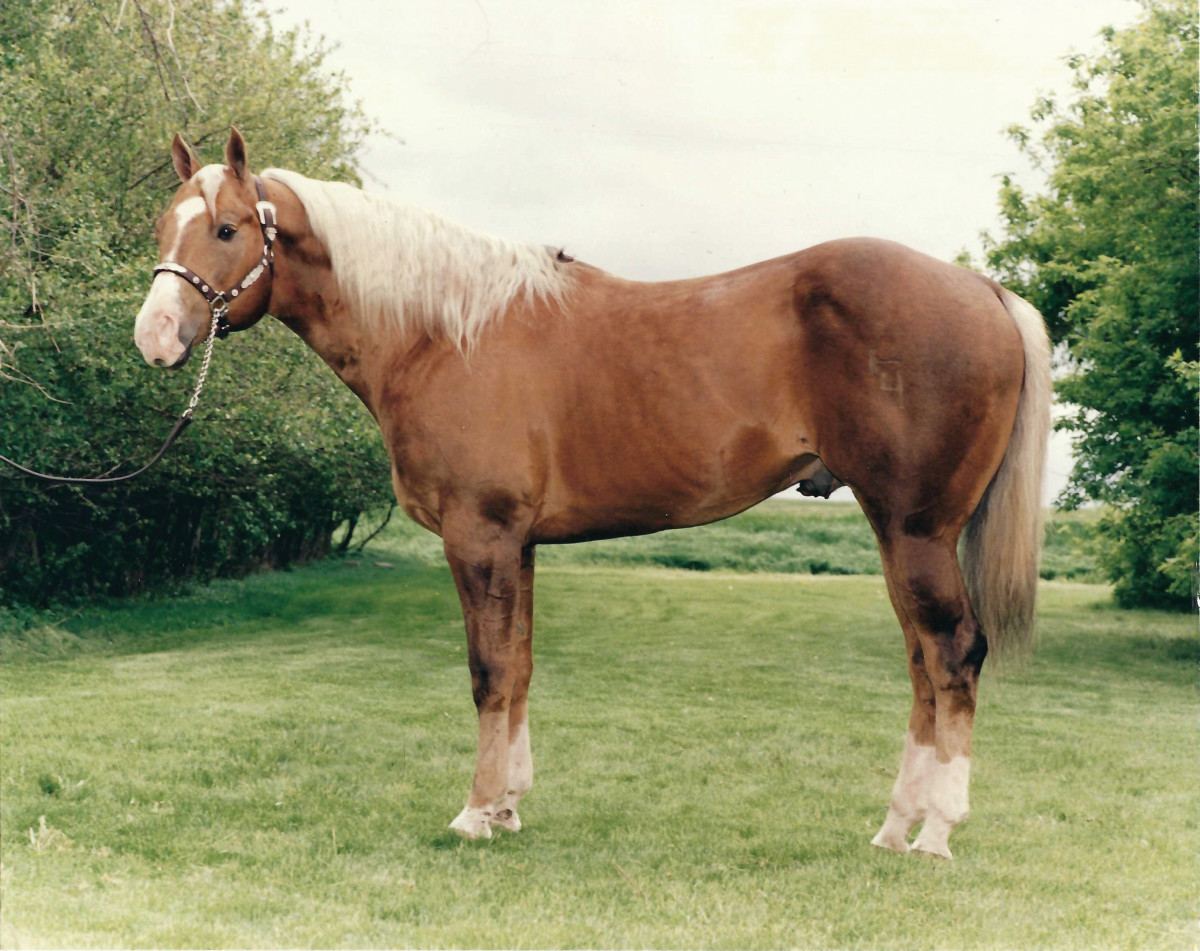
The Frosting
What sweetened Potter’s deal was that Cowan had also gotten his hands on Sun Frost. For reference, he’s a close brother to Skid Frost, sire of two NFR head horses, including the only team roping horse in the ProRodeo Hall of Fame (Travis Tryan’s “Walt”).
Sun Frost was bred in Arizona, so Potter knew personally every horse on the papers, from the running and roping blood in the Doc’s Jack Frost line to the Chicaro second dam on the bottom. Heck, Potter once neighbored with Art Pollard, whose top hand’s son—NFR team roper-turned-jockey Ramon Figueroa—used to rope on Doc Bar’s Hall-of-Fame daddy, Lightning Bar, in Potter’s arena. Who knew Lightning Bar won a team roping jackpot once?
Anyway, Potter most loved Sun Frost because he was out of a Driftwood Ike daughter. In the 1990s, when a Sun Frost son became one of the two greatest barrel horses that ever lived (Kristie Peterson’s Bozo), Potter went directly to Cowan’s sale to buy the full brother to him.
What about the rumor that Bozo bucked as a youngster? Potter dismisses that one as human error while the horse was being broke. The stereotype he will confirm is that you’d better show these horses something the right way the first time—because that’s the way they’re going to keep doing it.
A year after Potter bought PC Frenchmans Hayday (“Dinero”) by Sun Frost, Cowan bred a Sun Frost/Wilywood daughter to Lone Drifter to get PC Lonewood Ike. “Frisco” went back to Arizona and carried Colter Todd to three NFRs and almost a half-million dollars, starting with a Shootout they won at the USTRC Finals … heeling.
Sun Frost today perpetuates Driftwood’s rodeo legacy. And his brother’s roping talents are often overshadowed by the two barrel racing world champions he’s sired to date. Dinero placed in the AQHA/PRCA Heel Horse of the Year voting despite being hauled only a few months by Cory Petska. Plus, Potter said he’s “a helluva head horse” and may have missed his calling as a calf horse.
“With Sun Frost, it’s not just that they’re athletes, but that they’re “good-thinking horses,” said Jill Cowan. “And they’re medium-sized and powerfully built. So we’ve had a fair number of rope horses that would have made great barrel horses, and good barrel horses that would have been awesome head or heel horses.”
Cowan likes the Driftwood mares they cross with Sun Frost because they’re predictable. Another trait of the get is they seem to take good care of the rider.
“They learn what you teach them and retain it well,” she said. “We hear that a lot about these horses; people can ride them and then let them sit idle and pick up virtually right back where they left off.”
Cowan also likes their penchant for running fast and flat (just watch an old video of Frisco). Sun Frost also sired the dam of the horse on which Zac Small won an NFR go-round, the BFI and Houston Rodeo all in six months in 2017. Plus, remember in 2013 when Willow Nicholas became the first female team roper to earn money at Cheyenne Frontier Days? She was riding a son of Sun Frost out of a double-bred Orphan Drift mare.
Truly, the Cowans are building a similar multi-event legacy with Sun Frost as the one they keep alive with Driftwood—all while retaining a touch of Hancock through John Red. Reportedly, the Quarter Horse-Thoroughbred son of Red Man held the record at 220 yards and could really stop.
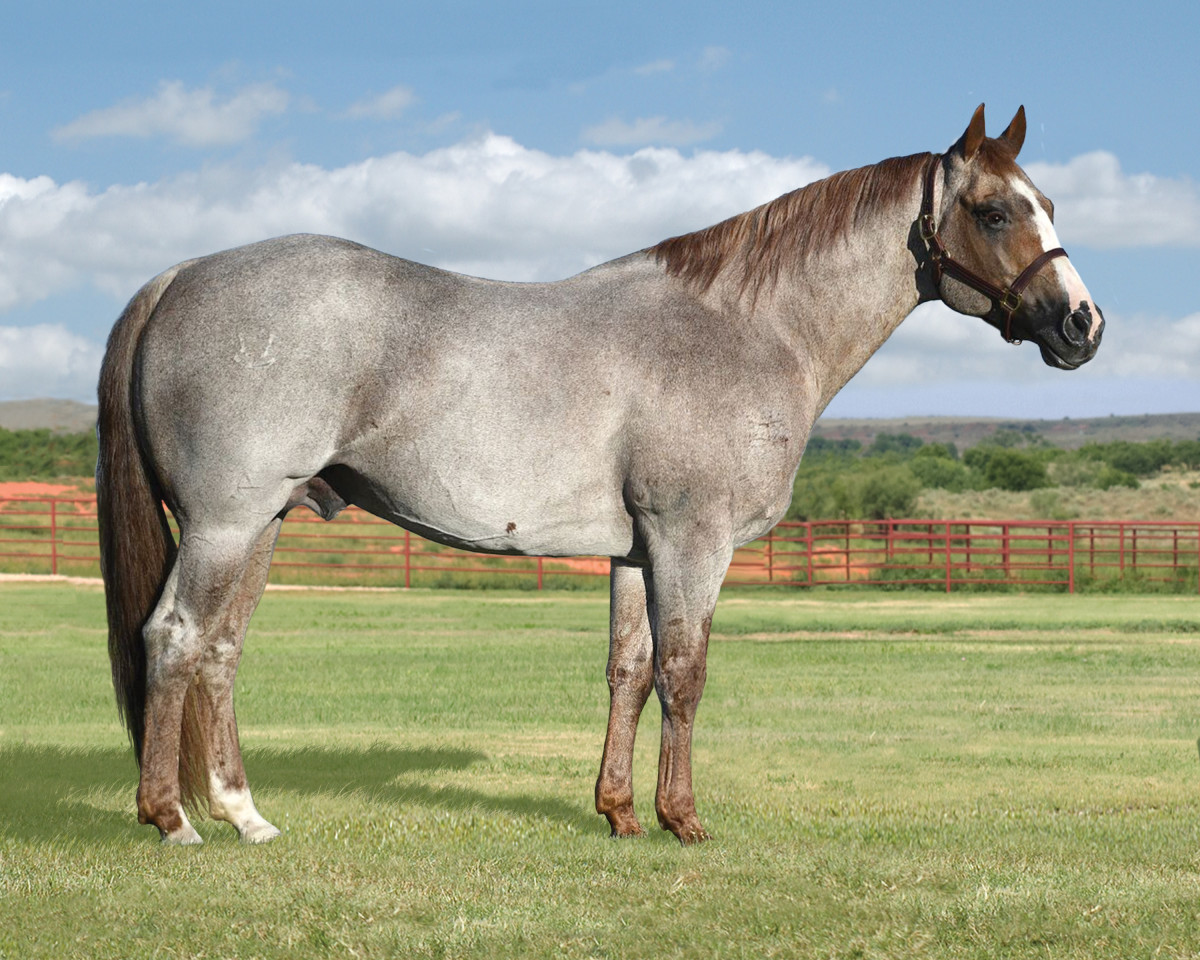
Pep in Their Step?
Another versatile bloodline dominates not just multiple rodeo events but varying disciplines across the board. The stereotype clinging to horses with “Peppy” on their papers is that they’re amazing athletes but a bit bronc-y to start. James Clement III—the sixth generation of King Ranch owners and head of its horse division—can clear some of that up.
“It was Mr. San Peppy, not Peppy San Badger, that was known to buck,” said Clement. “People got confused because they were father and son and the King Ranch owned them both and they were both such explosive athletes.”
Truth be known, these horses are so catty that there’s more than a good chance someone simply lost his seat on one and said he was bucked off. Select bloodlines now dominate cutting, but that was never the case until Peppy San Badger came along. Plus, Mr. San Peppy’s full brother, Peppy San, also became a Hall-of-Fame cutting horse and sire with Matlock Rose.
“All of that just made it a great idea to build all-around horses off their babies,” Clement said. “You know, Joe Stiles, our former King Ranch Horse manager, used to say that cutting is the ultimate athletic event in the Western world, and everything that falls off the side–rope horse, cow horse, ranch horse–is also then really good.”

Indeed. Peppy San is on the papers of Erich Rogers’s “Boogieman,” Clay Tryan’s “Johnson” and Kaleb Driggers’s “Dre.” Then, of course, on the heel side, Travis Graves and Joseph Harrison ride Dual Pep horses.
If any association comes with horses sporting “Peppy” blood, it might be they can simply be “too much horse” for some. That doesn’t bother the largest single ranch in America, which keeps all 35 of its cowboys mounted on horses descended from Mr. San Peppy, via its four stallions standing at the 6666 Ranch.
For years, Texas college-rodeo Hall-of-Famer Tommy Houston turned several King Ranch prospects into great rope horses. Last year’s second- and third-place AQHA/PRCA Head Horses of the Year both have great-grandmothers by Peppy San Badger. The “Little Peppy” grandson, Roo Star, is siring $80,000 head horses. And, on the heel side, NFR average winner Trey Yates and NFR heeler Wesley Thorp both ride horses that are double-bred Peppy San Badger. Plus, the line is durable.
“You know, through all those years and all those shows and all the hauling, Mr. San Peppy never had a single injury,” Clement said. “And nothing ever sidelined Peppy San Badger except a colic or two. They both lived to be about 30. I think it goes hand in hand. Those horses wanted to be there, wanted to fight to that cow. They had a lot of “try.” I think with some bloodlines, you ask, ‘Does this horse want to be here and want to do its job?’”
That’s it. They’ve got the “try” and mental acuity to not just do one job, but several—and for years. Another example? Professional rodeo’s first-ever Heel Horse of the Year. He won money and world championships heeling, tripping steers and running barrels for the extended Yates family for decades. “Pac Man” was a grandson of Bar Flit whose dam—the superstar producer, Flit—was the result of a Joe Hancock daughter bred to Leo.
Haters Gonna Hate
The good news is, these old rodeo bloodlines persist. The bad is that, through decades of tens of thousands of babies, there’s bound to be a few questionable characters. Bust through the rumors by evaluating each horse individually. And maybe, also keep in mind what Jim Brinkman throws out there: People love to tear down a champion.





